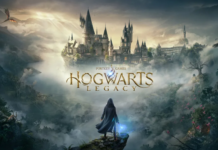Whenever an entity becomes as massively successful as Halo, it is only a matter of time before it collapses under its own weight. This cycle can be seen throughout history, from the fall of the mighty Roman Empire, to the excruciatingly slow demise of the Star Wars saga. When Halo 2 first sprang into view, it was clear the process had already begun. Widespread backlash over new multiplayer elements and imbalanced weapon design plagued the most anticipated Xbox title of all time, turning it into a feverish nightmare of unfair gameplay and unstoppable spawn killers. With the release of Ensemble Studios’ Halo Wars in 2009, it was clear to many people that Halo’s glory days were long gone.
To its credit, the many incarnations of Halo have arisen in fairly strong form. Halo Wars was a relatively risky play, being the first Halo title to be developed outside of Bungie Studios, and crafted in a real-time strategy engine. Ensemble managed to respectfully preserve the reputation of the Halo franchise, even if the review scores weren’t nearly as high as those of the original Halo series. Bungie took up the mantle once more with ODST, which many saw as an expansion rather than a truly new game. ODST took a safer route by sticking to the FPS format, and delivered an unquestionably exciting experience. Even so, most members of the so-called “Halo Nation” recognize the substantial inferiority of these spinoffs. Since the first Halo sequel hit the scene, many believed that things “just weren’t the same,” and perhaps they never would be.
Is this the future of Halo?
What many fail to realize is the inherently cyclical nature of such a massive franchise. Halo was a monumental success, and it’s no secret that Microsoft owed a great deal to Combat Evolved when the Xbox was first launched – hence their prompt acquisition of Bungie Studios. Yet no matter what changes are made to a game, it is nearly impossible to surpass an already unbelievably high threshold. Whatever gripes we may have, Halo 2 players still logged massive hours with their beloved sequel. Halo 3 set entertainment industry records in sales, a testament to the unquenchable thirst of the masses. By taking a strong gameplay foundation and expanding upon it, a series like Halo can rake in the cash for years to come. It is our familiarity with the core gameplay that keeps us coming back for more, while simultaneously preventing any groundbreaking changes from being implemented. While we may feel disappointed or even tired of Halo at times, does this necessarily mean we have lost our love for the game?
Flashy anime and bestselling novels have offered considerable depth to the Halo universe. From plastic collectibles and board games, to Halloween costumes and movies stuck in developmental limbo, there is ample evidence of Halo’s impact on popular culture, which extends far beyond the game industry. It’s easy to feel somewhat inundated. However, there seems to be a surprising level of care put into these products, suggesting that Halo can indeed stand strong even without placing total control in the hands of Bungie. One thing that made Bungie unique, however, was their commitment to ensuring the quality of many Halo products, even those they were not directly responsible for creating.
Of course, longtime Bungie followers are familiar with the titles that first put the studio on the map: Myth, Marathon, and Oni were great games, even if the vast majority of Bungie-heads have never heard of them. The company that yields a great product will quickly command a large fanbase, but Bungie’s famous dedication to their community sets them apart from other studios. In many ways, the smack-talking, jeans and T-shirt crew at Bungie have been decidedly anti-corporate in their organization and operation, and folks really seem to take to that cowboy image.
The twisted hand of irony dictates that such a successful studio will invariable expand into an immense entity. In fact, Bungie became a limited liability corporation in 2007, following their split with Microsoft. Three years later, a publishing deal was announced with the massive Activision (now the even more massive Activision Blizzard). While Bungie’s success is surely commendable, one cannot help but wonder just how long the studio will be able to fend off corporate influence.
It’s almost here, September 14 is quickly upon us
With so many Halo trinkets saturating the market, some would contend that Bungie has already lost its touch. Any franchise that bears its own set of 7-Eleven cups has clearly spiraled out of control, eliciting shrieks of joy from caffeinated children, and sighs of exasperation from gamers who miss the simple Halo parties that needed nothing but friends, pizza, and beer. Even if Halo has become bloated beyond its means, is Bungie any worse for the wear? Perhaps when their latest intellectual property is revealed, we’ll know for sure.
Despite all that has happened with Bungie, we still have Halo: Reach to look forward to. Perhaps this is because our greatest gameplay moments continue to hold the highest regard in our hearts. The crisp jolt of a well-placed headshot, the satisfying smack of a surprise melee, the rising roar of a warthog bouncing across the hillside – these memories cannot be stolen from us, no matter what the future may hold for the Halo franchise.










